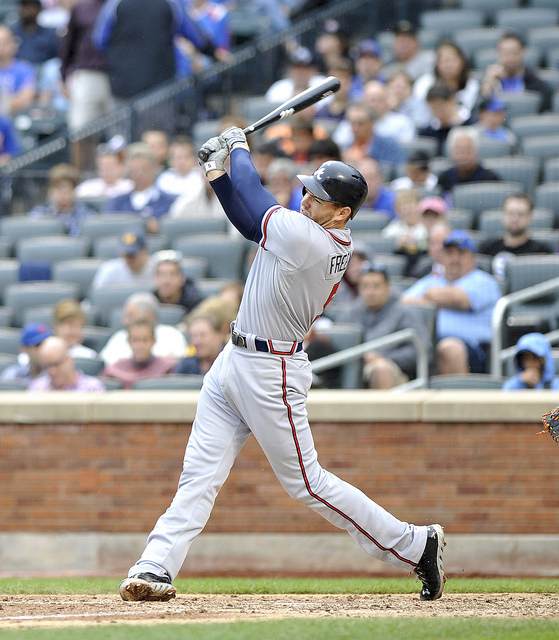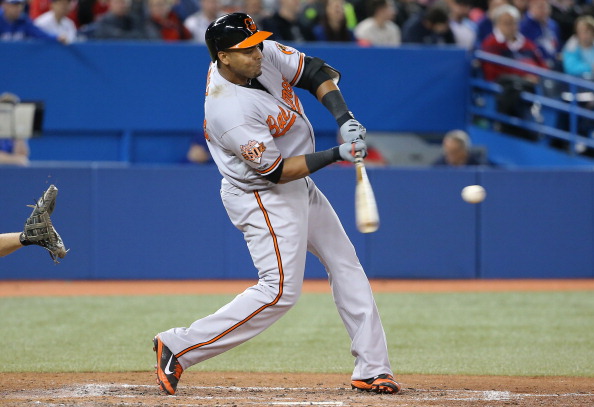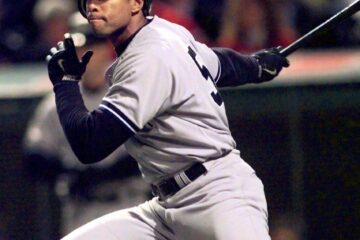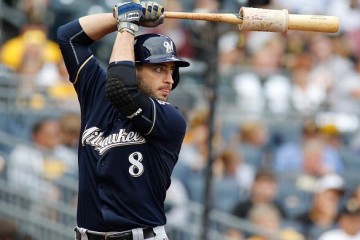2018 Fantasy Baseball: PECOTA Projections– Outfielders Part One
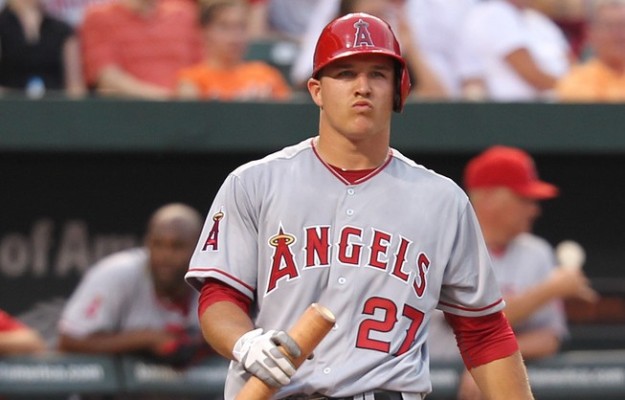
The rankings took a beating as they always seem to do. If there is anything universal, it is our need to trash others rankings. I’m happy to play along. The previous rankings were based primarily on past performance and not projections. So, we will reboot the rankings here based primarily on PECOTA projections at Baseball Prospectus. Before, we separated outfielders according to their position, but we will clump them all together for this round.
Most leagues have twelve teams and some leagues require teams to start upwards of five outfielders, so we will profile 60 outfielders in total. No one would stick around for an article totaling over 4000 words, so we will split the outfielders into three groups. We will start with the top 20 outfielders and go from there. We are including the six most popular categories (including walks) and a statistic Baseball Prospectus calls true average (TAV). It is calculated to distill out the affects of home ballparks, but it also attempts to include everything a hitter does into one number that looks like batting average.
1. Mike Trout— Los Angeles Angels
PECOTA: .296, 34 HR, 122 Runs, 102 RBI, 22 SB, 98 BB
TAV: .334
So much is made of five tool players. The truth of the matter is that they don’t necessarily make the most valuable players. For one, those tools don’t include plate discipline (which Trout has in spades). In another, it doesn’t account for the fact that not all tools are created equal. Trout may not actually be a five tool player, but it doesn’t matter. He is the best player in the game and it really isn’t particularly close.
2. Bryce Harper— Washington Nationals
PECOTA: .288, 31 HR, 98 Runs, 100 RBI, 10 SB, 90 BB
TAV: .310
Some would put others here, but this ranking is based on two suppositions. First, you are playing in a league that includes an on base element. Secondly, Harper will be healthy because he wants to put his best foot forward before free agency. Admittedly, those may not be perfect assumptions.
3. Giancarlo Stanton— New York Yankees
PECOTA: .258, 41 HR, 95 Runs, 109 RBI, 3 SB, 73 BB
TAV: .307
Study the collective numbers of Frank Thomas and Albert Belle in the late 1990s. That was the last time a team thought putting two elite sluggers would create greatness. It never seems to work out that way. True, there is always a first time for everything and this could be that time.
4. Aaron Judge— New York Yankees
PECOTA: .246, 37 HR, 107 Runs, 96 RBI, 6 SB, 86 BB
TAV: .294
Someone meaning to be cruel described Judge as “an athletic Dave Kingman.” I’m not sure if that was meant to disrespect Judge or if it underestimates Kingman. I’m sure the Yankees would take that if you put a gun to their head. Judge demonstrated in the playoffs that he can be conquered if you are able to throw a good curveball. It will be up to him to adjust.
5. Charlie Blackmon— Colorado Rockies
PECOTA: .286, 21 HR, 95 Runs, 75 RBI, 19 SB, 43 BB
TAV: .269
The Coors Field decoder ring causes a lot of problems in terms of fantasy projection. Coors Field has a park factor of 116 over the last three seasons. So, multiply his true average by 1.08 and you get the equivalent of a .291 TAV. PECOTA depresses numbers and probably artificially so. He has produced better than this in each of the past few seasons.
6. George Springer— Houston Astros
PECOTA: .262, 29 HR, 104 Runs, 87 RBI, 10 SB, 73 BB
TAV: .290
The World Series MVP will be a hotly sought after commodity after that performance. Five home runs in the World Series is quite a feat. However, players often don’t come close to repeating great postseason performance. Pablo Sandoval owners will attest to that. Astros fans hope he gets closer to Reggie Jackson.
7. Rhys Hoskins— Philadelphia Phillies
PECOTA: .259, 36 HR, 92 Runs, 104 RBI, 3 SB, 70 BB
TAV: .298
Hoskins will move permeanently to left field now that Carlos Santana is in Philadelphia. He will be eligible at first base next season, Multiple position flexibility always gives a player a little added value. PECOTA thinks he will be better than Springer, but we give a tip of the cap to track record in this case.
8. Cody Bellinger— Los Angeles Dodgers
PECOTA: .249, 37 HR, 93 Runs, 103 RBI, 10 SB, 64 BB
TAV: .287
Bellinger is like a mirror image of Hoskins. The only difference is that Bellinger went into the playoffs. A funny thing happens when you enter playoff baseball. The pitchers get good and scouting gets a lot better. So, pitchers found ways to get him out. Is that something that will continue or was it just because the pitchers were better?
9. Mookie Betts— Boston Red Sox
PECOTA: .293, 19 HR, 85 Runs, 81 RBI, 23 SB, 54 BB
TAV: .288
These numbers were crunched before the Red Sox added Martinez. People often extrapolate what they shouldn’t when teams add star performers. We won’t see a likely increase in speed or power, but we will likely see a few more runs and RBI.
10. J.D. Martinez— Boston Red Sox
PECOTA: .281, 28 HR, 66 Runs, 80 RBI, 3 SB, 39 BB
TAV: .290
PECOTA is assuming he will play in 120 games. That seems far fetched given that he is likely to serve as the full-time DH. PECOTA was tabulated before he signed with Boston. So, we could extrapolate these numbers out to 150 games and adjust the rankings. However, they had to reconfigure his contract to account for a foot condition. That’s not a good sign.
11. Nelson Cruz— Seattle Mariners
PECOTA: .268, 36 HR, 92 Runs, 106 RBI, 2 SB, 56
TAV: .291
If Cruz began his career the way he has finished it then he might be on his way to Cooperstown. As remarkable as he has been in his mid thirties this train is going to start coming off the tracks at some point. It might be this year or it might not. That’s a hard gamble to make.
12. Christian Yelich— Milwaukee Brewers
PECOTA: .281, 16 HR, 81 Runs, 77 RBI, 14 SB, 68 BB
TAV: .279
These numbers came before he was traded to the Brewers. In the past several seasons he has hit over .300 with 20+ home run power on the road. The Brewers undoubtedly were thinking about that when they made this swap and he also enters a much deeper lineup.
13. Justin Upton— Los Angeles Angels
PECOTA: .248, 28 HR, 86 Runs, 89 RBI, 13 SB, 62 BB
TAV: .276
The Angels decided to lower their fences an average of two and a half feet across the yard. Who knows how that will affect the hitters, but it can’t hurt. More importantly, the Angels added Ian Kinsler, Zack Cozart, and a few prominent bench pieces. So, it should give him more RBI opportunities.
14. Andrew McCutchen— Pittsburgh Pirates
PECOTA: .278, 23 HR, 89 Runs, 89 RBI, 10 SB, 76 BB
TAV: .290
How does one account for a trade to a worse hitting environment? This is especially vexing when a player moves to a better team that has a chance to compete. He should have more run producing opportunities and he will be playing in the corner outfield. That could preserve his legs and stave off the effects of age. Maybe a more motivated McCutchen will be a better McCutchen.
15. Yoenis Cespedes— New York Mets
PECOTA: .262, 28 HR, 78 Runs, 91 RBI, 4 SB, 39 BB
TAV: .274
The Mets added Adrian Gonzalez, Todd Frazier, and Jay Bruce. None of those guys will make anyone forget the 1986 Mets, but they will make the offense much more respectable. Couple that offense with the likes of Cespedes, Michael Conforto, and Asdrubal Cabrera and the Mets offense should be solid. If he is healthy he could produce higher than this rating.
16. Yasiel Puig— Los Angeles Dodgers
PECOTA: .272, 21 HR, 75 Runs, 76 RBI, 11 SB, 51 BB
TAV: .288
Statistics measure how often something occurs. It does not rate the very best or the very worst of ourselves. It measures what we produce the most often. Puig is a maddening player for every Dodgers fan. They see the very best ooze out every now and then and wonder why it doesn’t happen more often. The further you get away from Puig the more you likely appreciate what he does bring.
17. Michael Conforto— New York Mets
PECOTA: .263, 28 HR, 82 Runs, 92 RBI, 3 SB, 62 BB
TAV: .288
It’s easy to get overly conservative at the beginning of a season and shun anyone that will miss time. Conforto should be back before the end of April. The key question is whether he will give you more in five months than most players in six. For a second fantasy outfielder you could do a lot worse.
18. Tommy Pham— St. Louis Cardinals
PECOTA: .264, 22 HR, 98 Runs, 73 RBI, 22 SB, 70 BB
TAV: .279
The immediate thought is why Marcell Ozuna wouldn’t appear here. The answer lies in the projected steals and projected walks that Pham is likely to bring to the table. He won’t be as good as he was last season, but he should still be pretty good.
19. Domingo Santana— Milwaukee Brewers
PECOTA: .253, 24 HR, 89 Runs, 74 RBI, 9 SB, 67 BB
TAV: .278
Santana might rank higher if he finds a new home before Opening Day. The Brewers have four starting outfielders and that doesn’t even count Eric Thames who can play in the outfield in addition to first base. The Brewers need pitching, so this would seem like a natural move for someone out there.
20. Kyle Schwarber— Chicago Cubs
PECOTA: .244, 33 HR, 94 Runs, 87 RBI, 3 SB, 72 BB
TAV: .283
There are any number of explanations for Schwarber’s troubles last season. One said he needed an extra year to recover from ACL surgery. Another said he needed more time to adjust to the outfield. A likely explanation is that pitchers had adjusted and he didn’t counter. It’s likely a combination of a number of factors, but PECOTA is projecting a rebound regardless.


